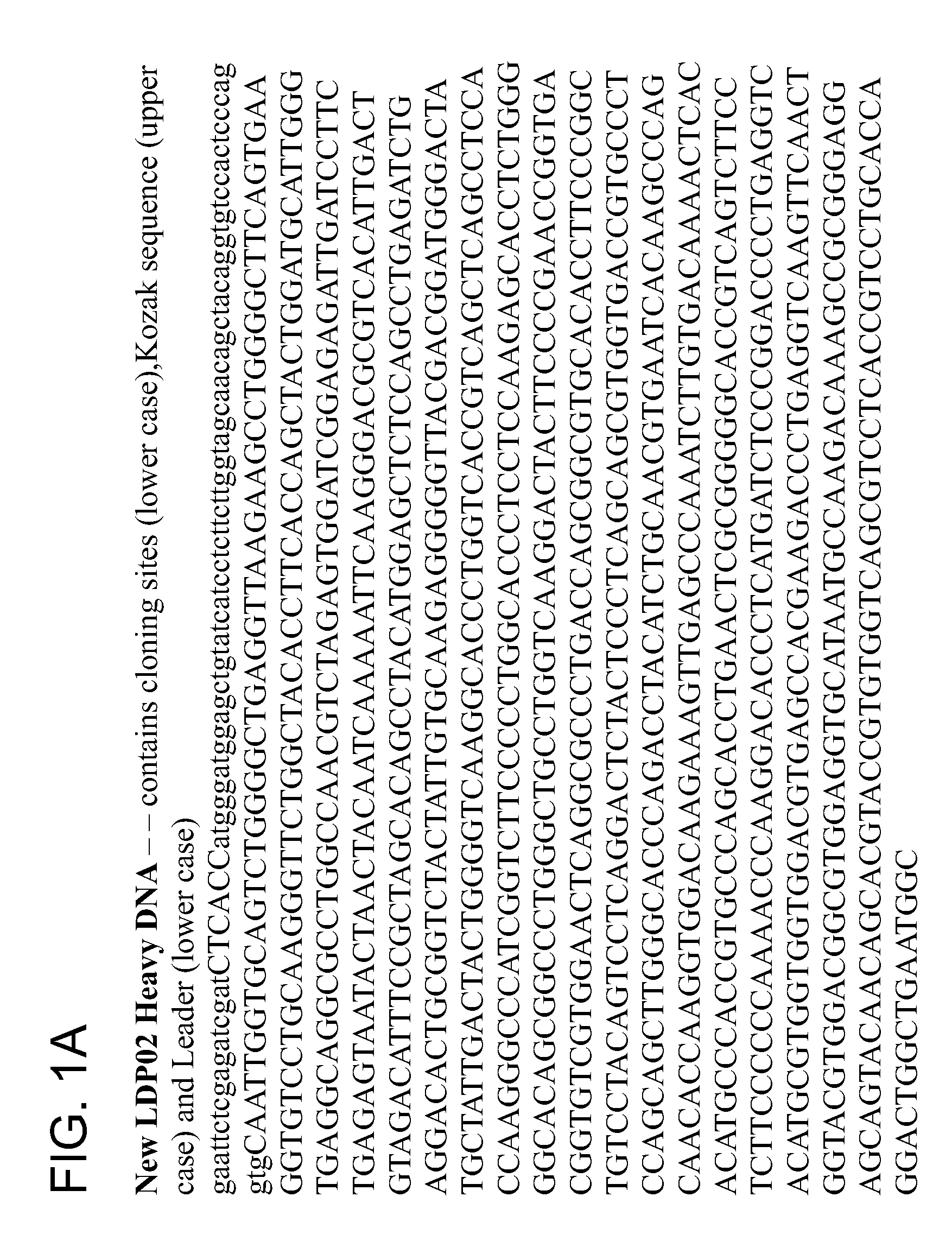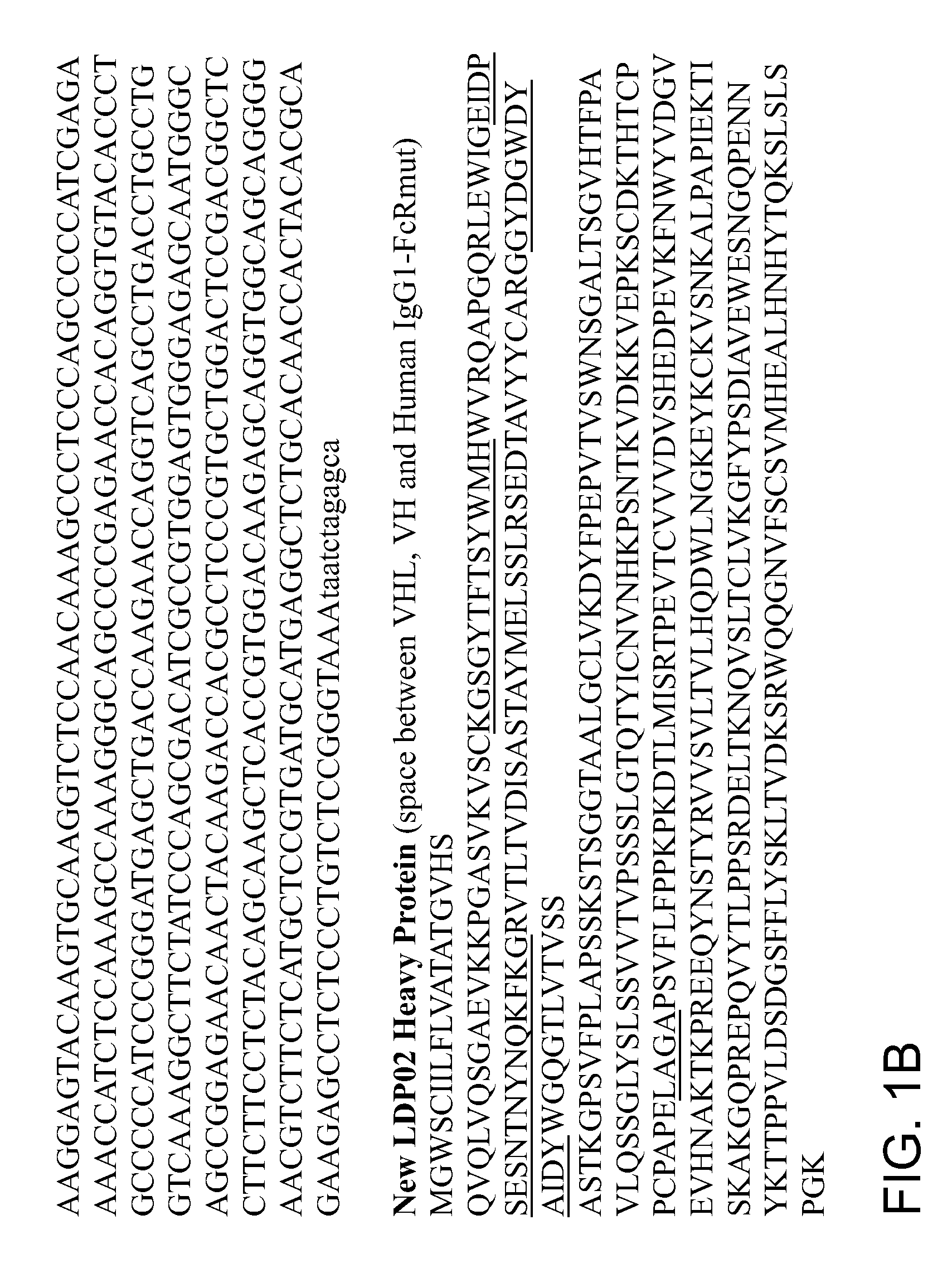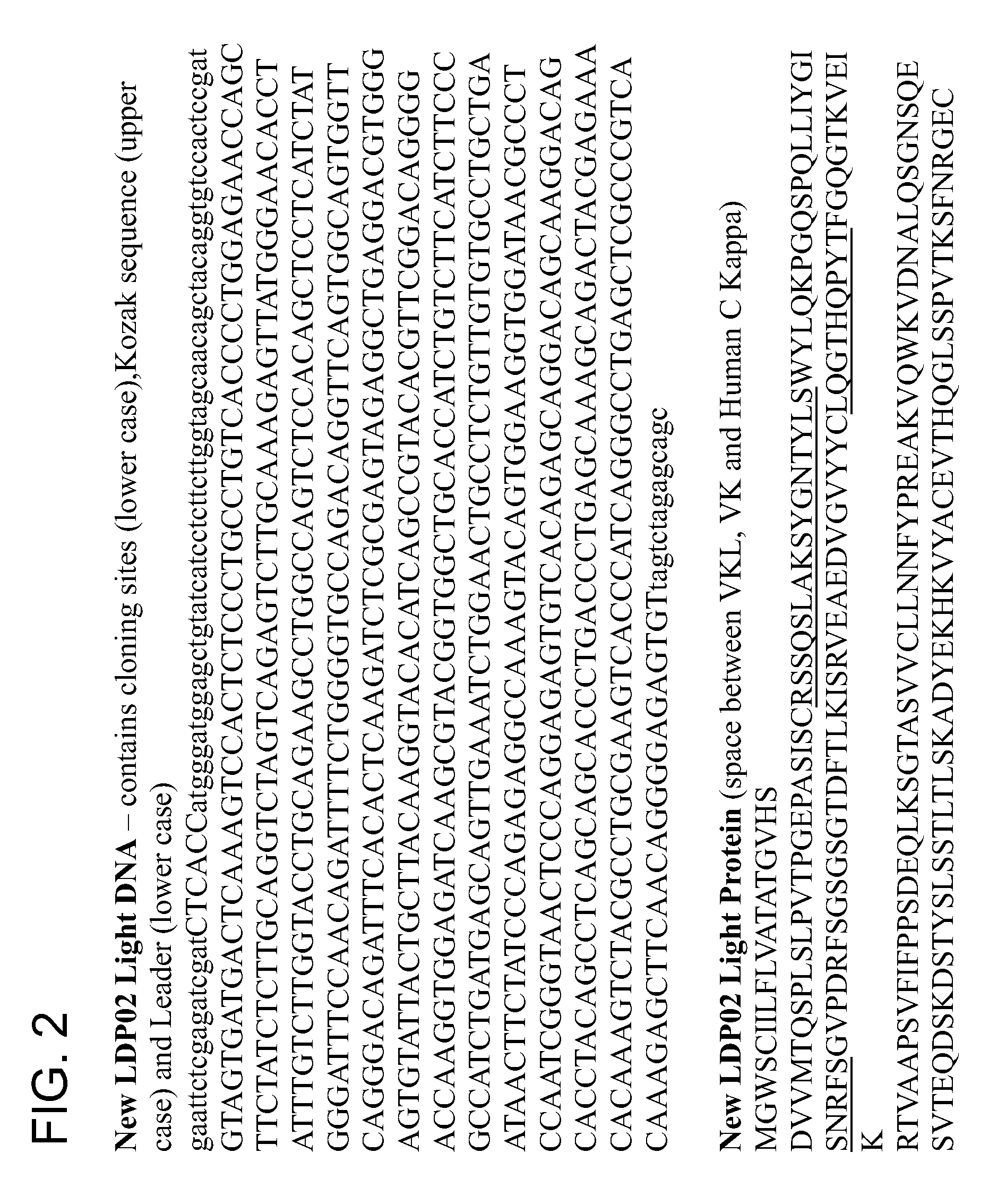Formulation for Anti-alpha4beta7 antibody
- Summary
- Abstract
- Description
- Claims
- Application Information
AI Technical Summary
Benefits of technology
Problems solved by technology
Method used
Image
Examples
example 1
Comparative Data for Varying % Sugar and Amino Acids in Lyophilized Formulations
[0204]A design of experiments approach was performed to look at the effect of varying the molar ratio of sugar (sucrose and mannitol) to protein, the molar ratio of arginine to protein, and the molar amount of histidine buffer. Histidine and arginine are known not to crystallize during the lyophilization process, making them potential cryo or lyo protectants. 1.5 mL of formulation was filled into 5 mL vials lyophilized with Primary Drying at −30° C., 150 mT and Secondary Drying at 20° C., 150 mT. The stability of the lyophilized formulations reconstituted to 1.5 ml after different storage conditions is shown in Tables 1-3 (compiling 60 mg / ml results from two experiments). FIG. 6A shows the predictive models for changes in Percent Monomer, Percent Aggregates, and Percent Major Isoform when stored at 40° C. when pH and the molar ratio of sugar and arginine was varied. The stability of the formulation was b...
example 2
Stability Data
[0207]Three primary stability batches of the formulation (Batch A, B, and C) were tested for stability after storage at the prescribed storage condition (5 and 25° C. / 60% RH for up to 24 months). All three batches contain the same liquid formulation that was lyophilized: 60 mg / mL anti-α4β7 antibody, 50 mM histidine, 125 mM arginine, 10% sucrose, 0.06% polysorbate 80, pH 6.3. For Batch A, 3.5 mL of solution was filled into 20 mL vials and lyophilized, for Batches B and C, 5.52 mL of solution was filled into 20 mL vials and lyophilized.
[0208]In a separate study, a single drug formulation of 60 mg / ml anti-α4β7 antibody, 50 mM histidine, 125 mM arginine, 10% sucrose, 0.06% polysorbate 80, pH 6.3 was lyophilized in two volumes, 3.5 ml and 9.5 ml, respectively, to yield Batches R and S for stability samples, which were analyzed over 38 months. Blanks are NT (not tested).
[0209]The data (Tables 4-19) showed that the antibody formulations remained stable when stored for up to 2...
example 3
Modeling the Scale-Up of the Lyophilization Process
[0226]Quality by design was used while manipulating the load in the freeze dryer and the solids content of the formulation. The load was varied from 33 to 100%. The formulation solids content was varied from 9 to 27% by including in the loads a formulation which was either 0.5×, 1.0× and 1.5× of the target formulation. These formulations had similar Tg′. With higher % solids, the primary drying time increased. In addition, at higher solids content, the product temperature increased due to larger Rp. The load also has an effect on both stages of drying (FIG. 8).
PUM
| Property | Measurement | Unit |
|---|---|---|
| Time | aaaaa | aaaaa |
| Time | aaaaa | aaaaa |
| Time | aaaaa | aaaaa |
Abstract
Description
Claims
Application Information
 Login to View More
Login to View More - R&D
- Intellectual Property
- Life Sciences
- Materials
- Tech Scout
- Unparalleled Data Quality
- Higher Quality Content
- 60% Fewer Hallucinations
Browse by: Latest US Patents, China's latest patents, Technical Efficacy Thesaurus, Application Domain, Technology Topic, Popular Technical Reports.
© 2025 PatSnap. All rights reserved.Legal|Privacy policy|Modern Slavery Act Transparency Statement|Sitemap|About US| Contact US: help@patsnap.com



